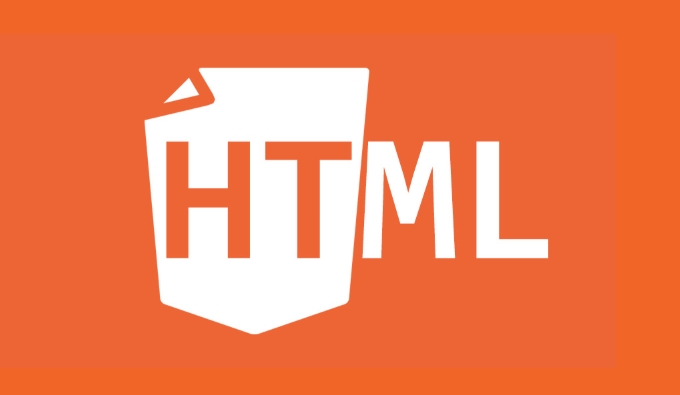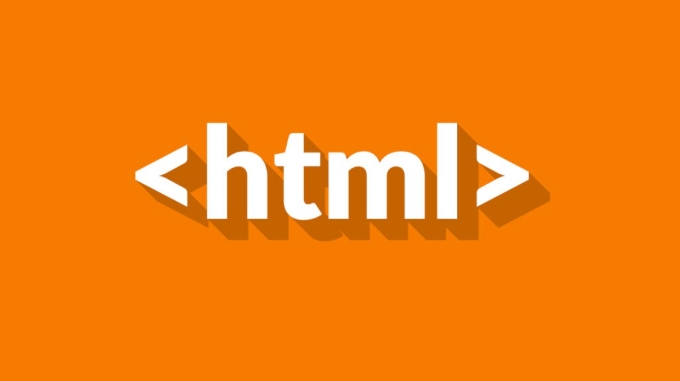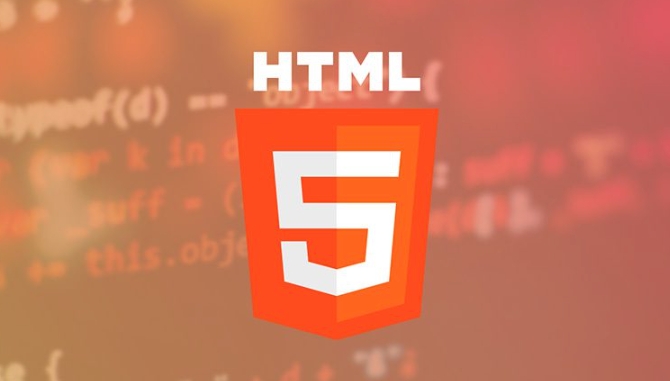How does the srcset attribute help with responsive images in html?
Jul 07, 2025 am 12:26 AMsrcset is an attribute of the <img src="/static/imghw/default1.png" data-src="https://img.php.cn/upload/article/000/000/000/175181916625665.jpeg" class="lazy" alt="How does the srcset attribute help with responsive images in html?" > tag in HTML, used to define multiple image sources, allowing the browser to select the most appropriate image based on the device's screen size and resolution. 1. It improves page loading speed and user experience, avoiding unnecessary large image downloads or blurred displays. 2. Use the w descriptor to specify the image width, combined with the sizes attribute, the browser can select the best image according to the layout width. 3. A pixel density descriptor such as 2x can be used to provide a clearer image for high-resolution screens. 4. In actual use, src should be included as fallback, and ensure that the image size is accurate and optimized well. Cross-device testing should be carried out to ensure the effect.

The srcset attribute in HTML helps with responsive images by allowing the browser to choose the most appropriate image source based on the device's screen size and resolution. This means you can serve smaller images to mobile devices and larger, higher-quality ones to desktops without extra JavaScript or complicated logic.

What is srcset and why use it?
The srcset attribute is used inside an <img src="/static/imghw/default1.png" data-src="https://img.php.cn/upload/article/000/000/000/175181916625665.jpeg" class="lazy" alt="How does the srcset attribute help with responsive images in html?" > tag to define multiple image sources that the browser can pick from. It's especially useful when designing responsive websites where images need to scale nicely across different devices.

Here's a basic example:
<img src="/static/imghw/default1.png" data-src="image-small.jpg" class="lazy"
srcset="image-small.jpg 480w, image-medium.jpg 800w, image-large.jpg 1200w"
alt="A responsive image">In this case:

- The browser picks one of the images depending on the width of the device.
- The
wdescriptor tells the browser the width of each image in pixels.
Using srcset improves page load speed and user experience by ensuring users get appropriately sized images for their screens.
How does the browser decide which image to use?
By default, the browser looks at the screen width and selects the best fit from the srcset list based on the image's width descriptor ( w ) and the current layout width (as defined by the sizes attribute, more on that below).
You can also add pixel density descriptors like 2x for high-DPI displays such as Retina screens:
<img src="/static/imghw/default1.png" data-src="image-normal.jpg" class="lazy"
srcset="image-normal.jpg 1x, image-retina.jpg 2x"
alt="High DPI image example">This way:
- Devices with standard screens get the normal image.
- High-resolution displays get the sharper version.
Without srcset , browsers would always download the same image regardless of screen capabilities, which could lead to unnecessarily large downloads or blurry visuals.
Combining srcset with sizes
To make srcset even more powerful, pair it with the sizes attribute. sizes tells the browser how big the image will appear on the page at different viewport widths, using media queries.
Here's a full example:
<img src="/static/imghw/default1.png" data-src="image-small.jpg" class="lazy"
srcset="image-small.jpg 480w,
image-medium.jpg 800w,
image-large.jpg 1200w"
sizes="(max-width: 600px) 100vw,
(max-width: 900px) 50vw,
33vw"
alt="Responsive image with sizes">What's happening here:
- On screens narrower than 600px, the image takes up the full width (
100vw), so the browser picks the smallest image. - Between 601px and 900px, the image is half the screen width (
50vw), so a medium-sized image is ideal. - Above 900px, the image takes up about a third of the screen (
33vw), so the largest image is selected.
This gives the browser enough context to make smart decisions about which image to load — not just based on screen size, but based on how the image is actually laid out.
A few things to keep in mind
- Always include a
srcattribute – it acts as a fallback ifsrcsetisn't supported. - Use correct image dimensions – Make sure the
wvalues ??match the actual pixel width of each image. - Optimize your images – Even with
srcset, oversized or unoptimized images can still hurt performance. - Test across devices – Use browser dev tools to simulate different screen sizes and see which image gets loaded.
It might take a bit of setup, but once you've got it right, srcset makes handling responsive images much easier and more efficient.
Basically that's it.
The above is the detailed content of How does the srcset attribute help with responsive images in html?. For more information, please follow other related articles on the PHP Chinese website!

Hot AI Tools

Undress AI Tool
Undress images for free

Undresser.AI Undress
AI-powered app for creating realistic nude photos

AI Clothes Remover
Online AI tool for removing clothes from photos.

Clothoff.io
AI clothes remover

Video Face Swap
Swap faces in any video effortlessly with our completely free AI face swap tool!

Hot Article

Hot Tools

Notepad++7.3.1
Easy-to-use and free code editor

SublimeText3 Chinese version
Chinese version, very easy to use

Zend Studio 13.0.1
Powerful PHP integrated development environment

Dreamweaver CS6
Visual web development tools

SublimeText3 Mac version
God-level code editing software (SublimeText3)

Hot Topics
 Explain the purpose of the role attribute in ARIA.
Jun 14, 2025 am 12:35 AM
Explain the purpose of the role attribute in ARIA.
Jun 14, 2025 am 12:35 AM
ARIA's role attribute is used to define the role of web elements and improve accessibility. 1. Role attribute helps assistive technology to understand the functions of elements, such as buttons, navigation, etc. 2. Use role attributes to assign specific roles to non-semantic HTML elements. 3. The role attribute should be consistent with the element behavior and be verified by the accessibility tool test.
 HTML and Design: Creating the Visual Layout of Websites
Jun 14, 2025 am 12:39 AM
HTML and Design: Creating the Visual Layout of Websites
Jun 14, 2025 am 12:39 AM
How to create a website layout? 1. Use HTML tags to define the content structure, such as, ,. 2. Control styles and positions through CSS, using box model, float or Flexbox layout. 3. Optimize performance, reduce HTTP requests, use cache and optimize images, and ensure responsive design.
 How do I stay up-to-date with the latest HTML standards and best practices?
Jun 20, 2025 am 08:33 AM
How do I stay up-to-date with the latest HTML standards and best practices?
Jun 20, 2025 am 08:33 AM
The key to keep up with HTML standards and best practices is to do it intentionally rather than follow it blindly. First, follow the summary or update logs of official sources such as WHATWG and W3C, understand new tags (such as) and attributes, and use them as references to solve difficult problems; second, subscribe to trusted web development newsletters and blogs, spend 10-15 minutes a week to browse updates, focus on actual use cases rather than just collecting articles; second, use developer tools and linters such as HTMLHint to optimize the code structure through instant feedback; finally, interact with the developer community, share experiences and learn other people's practical skills, so as to continuously improve HTML skills.
 How do I use the element to represent the main content of a document?
Jun 19, 2025 pm 11:09 PM
How do I use the element to represent the main content of a document?
Jun 19, 2025 pm 11:09 PM
The reason for using tags is to improve the semantic structure and accessibility of web pages, make it easier for screen readers and search engines to understand page content, and allow users to quickly jump to core content. Here are the key points: 1. Each page should contain only one element; 2. It should not include content that is repeated across pages (such as sidebars or footers); 3. It can be used in conjunction with ARIA properties to enhance accessibility. Usually located after and before, it is used to wrap unique page content, such as articles, forms or product details, and should be avoided in, or in; to improve accessibility, aria-labeledby or aria-label can be used to clearly identify parts.
 How do I create a basic HTML document?
Jun 19, 2025 pm 11:01 PM
How do I create a basic HTML document?
Jun 19, 2025 pm 11:01 PM
To create a basic HTML document, you first need to understand its basic structure and write code in a standard format. 1. Use the declaration document type at the beginning; 2. Use the tag to wrap the entire content; 3. Include and two main parts in it, which are used to store metadata such as titles, style sheet links, etc., and include user-visible content such as titles, paragraphs, pictures and links; 4. Save the file in .html format and open the viewing effect in the browser; 5. Then you can gradually add more elements to enrich the page content. Follow these steps to quickly build a basic web page.
 How do I create checkboxes in HTML using the element?
Jun 19, 2025 pm 11:41 PM
How do I create checkboxes in HTML using the element?
Jun 19, 2025 pm 11:41 PM
To create an HTML checkbox, use the type attribute to set the element of the checkbox. 1. The basic structure includes id, name and label tags to ensure that clicking text can switch options; 2. Multiple related check boxes should use the same name but different values, and wrap them with fieldset to improve accessibility; 3. Hide native controls when customizing styles and use CSS to design alternative elements while maintaining the complete functions; 4. Ensure availability, pair labels, support keyboard navigation, and avoid relying on only visual prompts. The above steps can help developers correctly implement checkbox components that have both functional and aesthetics.
 What is an HTML tag?
Jun 13, 2025 am 12:36 AM
What is an HTML tag?
Jun 13, 2025 am 12:36 AM
HTMLtagsareessentialforstructuringwebpages.Theydefinecontentandlayoutusinganglebrackets,ofteninpairslikeand,withsomebeingself-closinglike.HTMLtagsarecrucialforcreatingstructured,accessible,andSEO-friendlywebpages.
 How do I minimize the size of HTML files?
Jun 24, 2025 am 12:53 AM
How do I minimize the size of HTML files?
Jun 24, 2025 am 12:53 AM
To reduce the size of HTML files, you need to clean up redundant code, compress content, and optimize structure. 1. Delete unused tags, comments and extra blanks to reduce volume; 2. Move inline CSS and JavaScript to external files and merge multiple scripts or style blocks; 3. Simplify label syntax without affecting parsing, such as omitting optional closed tags or using short attributes; 4. After cleaning, enable server-side compression technologies such as Gzip or Brotli to further reduce the transmission volume. These steps can significantly improve page loading performance without sacrificing functionality.






